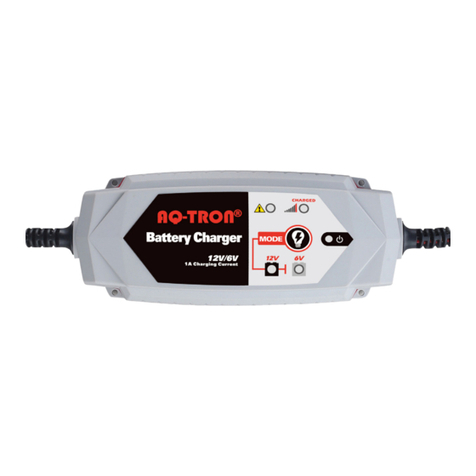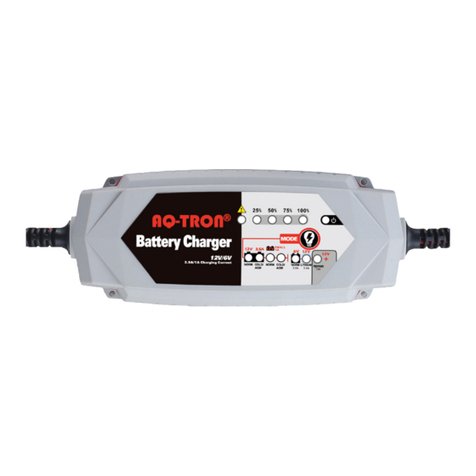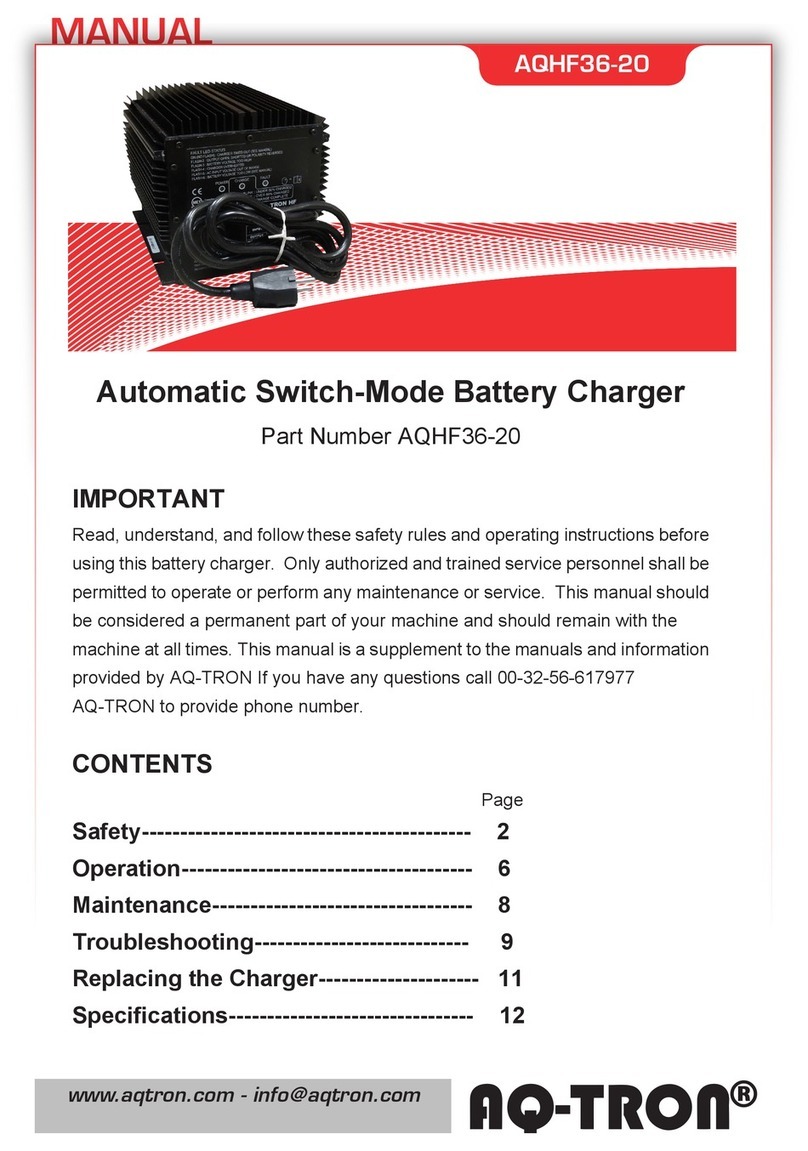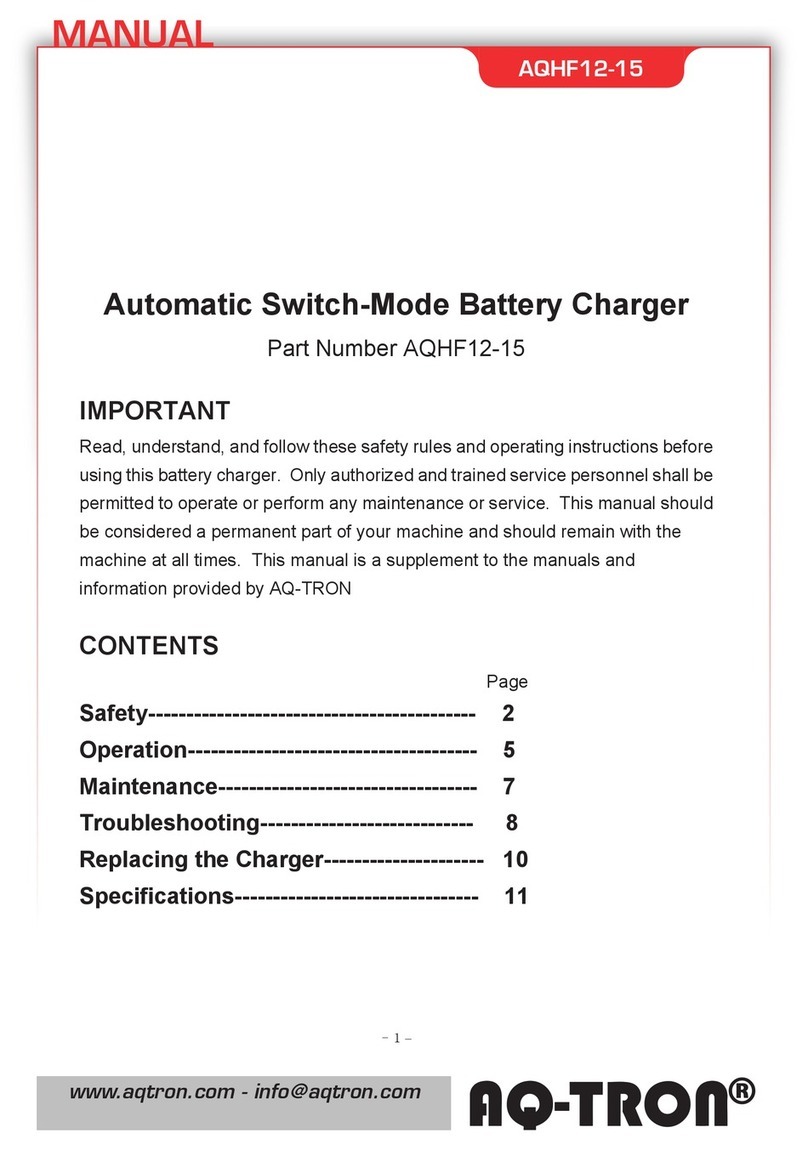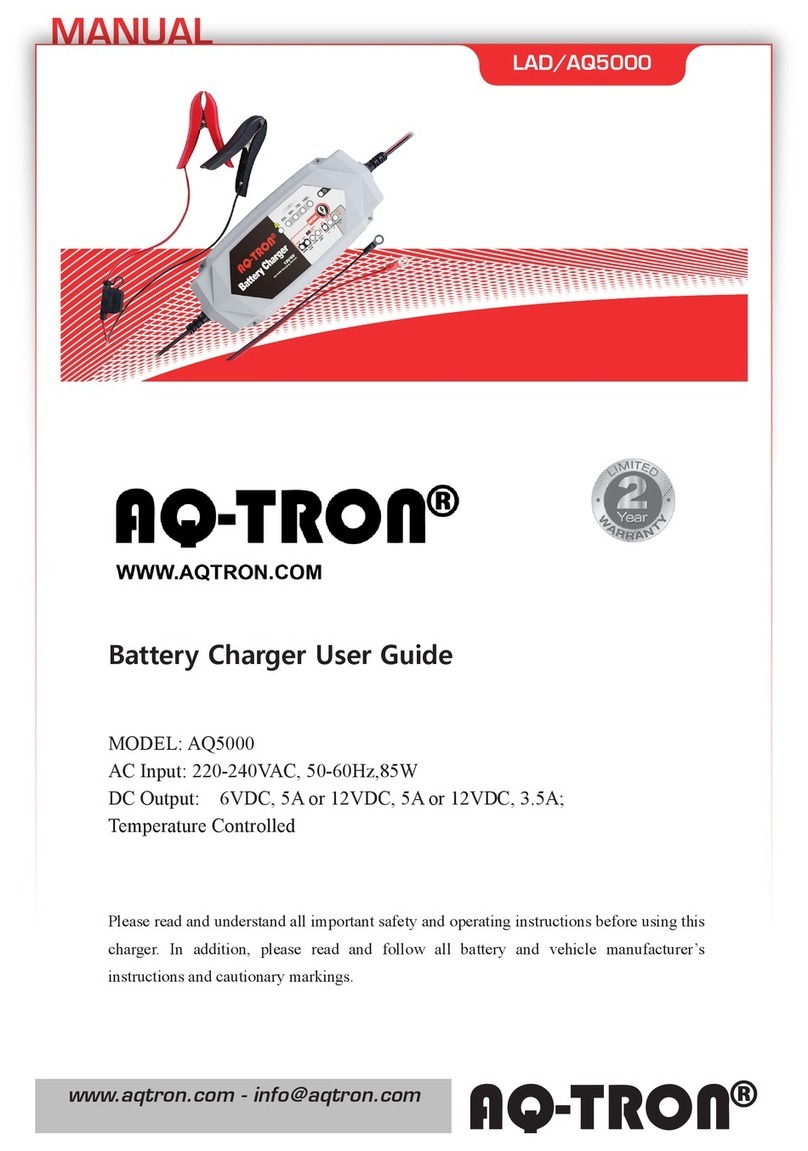
USER GUIDE
BAT/45686
2) Do NOT cover the charger while charging.
3) Do NOT expose to rain or wet conditions.
4) Connect and disconnect DC output only after setting AC cord from electric outlet.
5) Use of an attachment not recommended or sold by the manufacturer may result in a risk
of fire, electric shock or injury to persons.
6) Do not overcharge batteries by selecting the wrong charge mode.
7) To reduce the risk of damage to electric plug and cord, pull by the plug rather than the
cord when disconnecting charger.
8) To reduce risk of electric shock, unplug charger from outlet before attempting any
maintenance or cleaning.
9) Operate with caution if the charger has received direct hit of force or been dropped.
Have it checked and repaired if damaged.
10) Any repair must be carried out by the manufacturer or an authorized repair agent in
order to avoid danger.
11) This battery charger is for use on a nominal 220-240 volt circuit and has a grounded
plug. The charger must be grounded, to reduce the risk of electric shock.
A B O U T BAT/45686
1)
BAT/45686
is designed for charging all types of 12V lead-acid and 24V lead-acid batteries,
including WET (Flooded), MF (Maintenance-Free), EFB (Enhanced Flooded Battery),
GEL, AGM (Absorbed Glass Mat) batteries.
2) Built-in intelligent microprocessor makes charging faster, easier and safer.
3) This charger has safety features, including spark proof, protection for reverse polarity,
short circuit, overheat, overcharge and overcurrent.
4) Charging start-up threshold is 1V.
5) It has the clamp storage panel on the back and as well as two wheels.
6) How to install the handle? Please follow the instructions. When you take the charger out
from the package, the handle is uninstalled. To install the handle, first pull the clamp
storage panel upwards and remove it, then a tool (e.g. screwdriver) is needed to help
make springback for the buckle until the buckles are in the right position (showed in
following second image). Remember to put on the clamp storage panel. If you want to
store the charger, just keep the handle pulled upwards in the right position. If you insist
to pull the handle down, first pull the clamp storage panel upwards and remove it, then
use the tool to make springback for the buckle and pull the handle down (remember to
put on the clamp storage panel at last).

